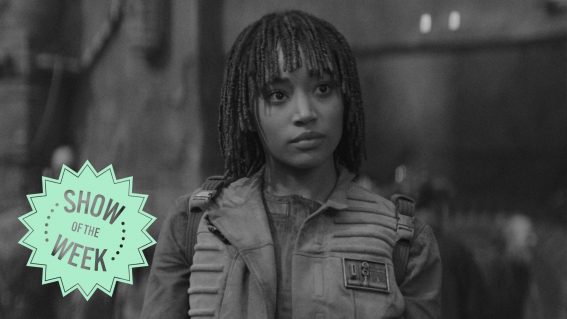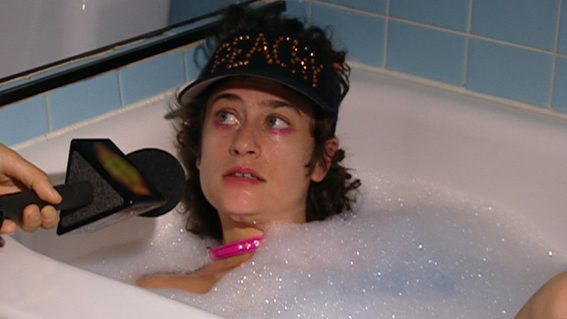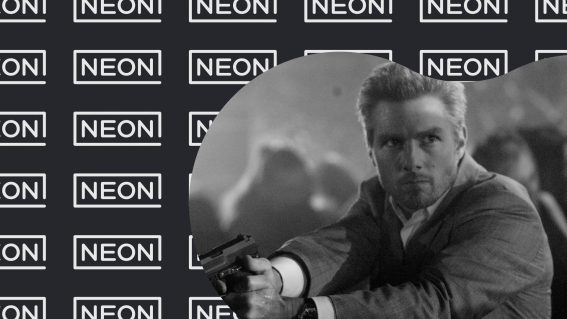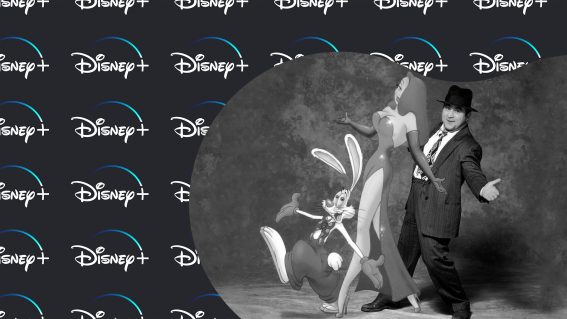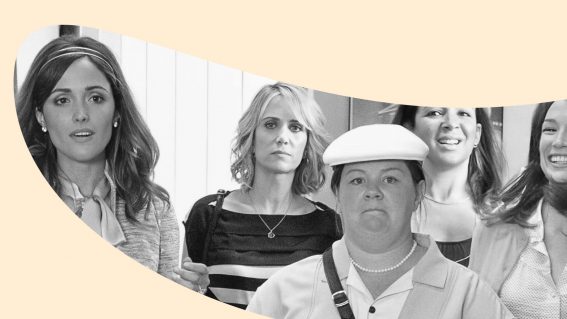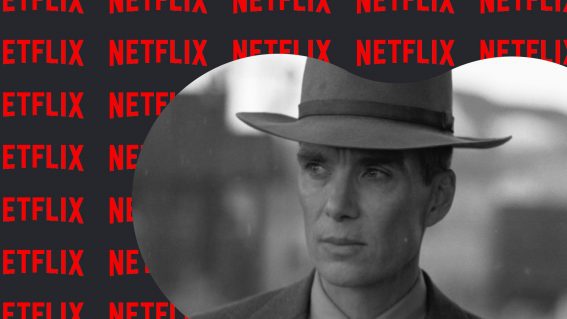The Faceless Lady is classic haunted castle horror – told in 180 degree VR
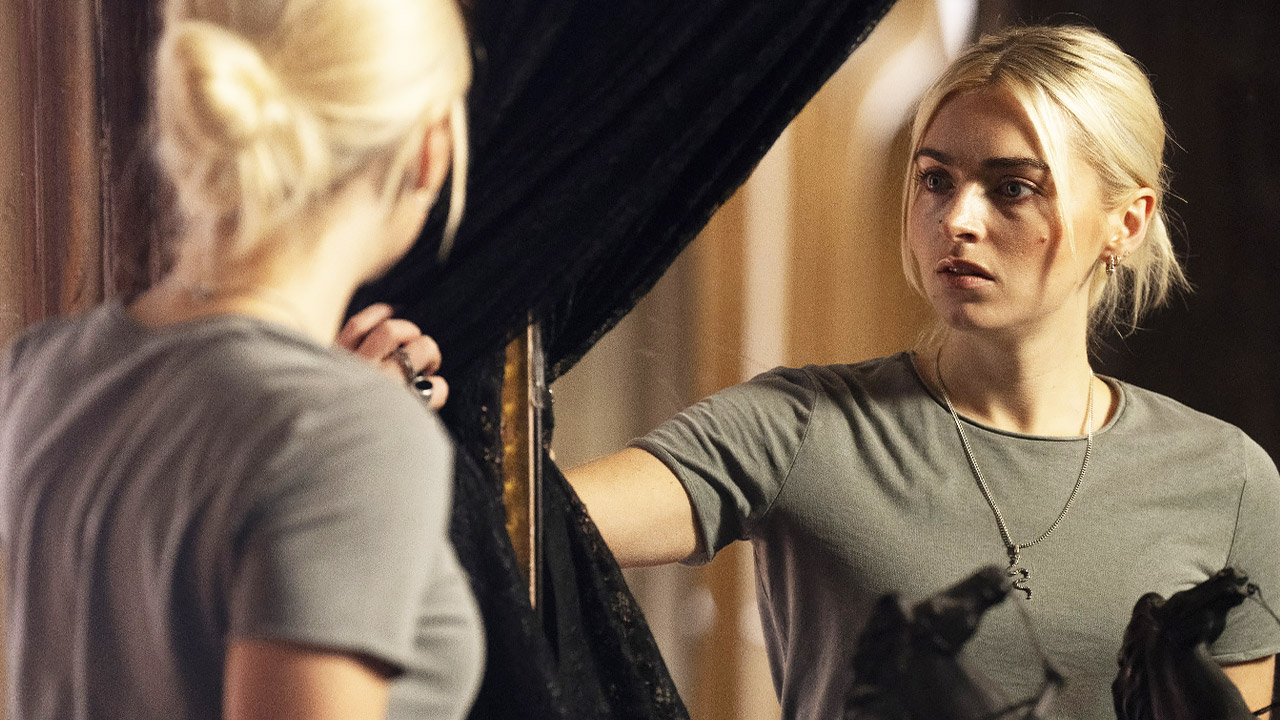
Available through Oculus and Meta headset technology, The Faceless Lady pairs old-fashioned scares with the visual immediacy of virtual reality. Luke Buckmaster says that the series’ problems mostly lie in confusing directorial choices.
The Eli Roth-produced horror series The Faceless Lady is strikingly different to anything else on the market—while also bogged down by an aura of same-old same-old. Presented in a 180 video format, and separated into six episodes accessible through Meta’s VR headsets, it arrives with some next-gen wow factor—looking big, shiny and crisp, the actors and settings feeling intimately close in this highly immersive medium.
The story meanwhile is fusty and folkloric: a haunted house—well, castle—narrative with a tournament twist, revolving around three couples competing to win a spectacular property in Ireland. Shame about that centuries-long curse and the ghost roaming the hallways.
Roth has dabbled in the 180 format before, directing one short horror experience and producing another. But The Faceless Lady—which was written by Jerome Velinsky and directed by John William Ross—is a big step up in budget and runtime, and has been used by Meta to experiment with a traditional “appointment viewing” distribution strategy. New episodes landed weekly following the premiere of the first two on April 4; all are now available. And although a couple can be watched via Facebook on a flat screen, you’ll need to strap into a Meta Quest headset to experience them in full, and in the way they were intended.
Once you’ve done that, if you’re new to 180 videos, it’ll take a few moments to get accustomed to the viewing experience, with a screen-like area that occupies pretty much all available space before your eyes, but ends if you turn your head left or right. Even if you’re a seasoned VR enthusiast, such as myself, The Faceless Lady also arrives with a ring of novelty—simply because there are so few narrative-based live action productions in this format.
It opens with a clap of medieval action, sword-swinging men seizing Ireland’s (fictitious) Kilolc Castle. The leader of the invaders wants to force the hand of Lady Margaret (Kathryn Wilder) into marriage, but she ain’t going quietly. You’ve probably heard the expression “cutting off one’s nose to spite one’s face.” Here crazy Marg (literally) cuts off her own face to spite her oppressor, slicing into it then peeling her skin off—a rather ghastly image that’s likely to stay with you.
The timeline then jumps forward to present day, with three couples—including the protagonist Ella and her boyfriend Dion—arriving at the castle to undertake a series of games, the prize being the castle itself. This scenario has been engineered by a mysterious old codger (Ned Dennehy) who gets his participants to do things like throw axes at a human-shaped, sack-covered target, only for them to discover there’s an actual human inside.
Meanwhile the ghost of Lady Margaret, who cursed the castle, drifts around, exhibiting a particular fondness for appearing to Ella in mirror reflections—then disappearing when she turns to look. It’s all rather boilerplate, even before that shot of an old door slowly creaking open. But the 180 VR format really does change the dynamic, paradoxically bringing both a high-end, unusually realistic look, and jarring touches that take us out of the experience. These are mostly to do with Ross’ directorial choices, not the technology.

Ross’ over-reliance on air-filled mid-shots, for example, often make the cast look oddly small, almost miniature. Also jarring are the (strangely frequent) moments that show the actors looking past the camera, at something we feel we should be able to see ourselves if we turn our heads—but if we do, we’ll hit nothing but empty black space. In general the editing is higgledy-piggledy and displacing. It’s hard to sink into any moment, because you know the director will soon cut away, even if it’s just to the other side of the room.
Narrative-based 180 videos remain under-explored, but it’s clear certain approaches work better than others. Robert Rodriguez’s frenetic 18 minute short The Limit, for instance, is much more fluid and visually satisfying, albeit with a crucial difference: it unfolds in first-person perspective, the viewer embodying a cyborg. The 16 minute Ghost in the Shell – Virtual Reality Diver is a 360 rather than 180 video, but it demonstrates the power of long, explorative camerawork in immersive mediums—unlike The Faceless Lady, respecting spatial unity and feeling visually coherent even when doing wild things, diving and careening through a cyberpunk Japan.
Several episodes begin with the camera close to a monitor displaying audition footage, in the old codger’s office, before gradually retreating from it, in a backwards direction, revealing the contents of the room. It’s a simple touch that works well and shows The Faceless Lady starting to settle into a comfortable rhythm.
Many other moments made me want to beg Ross to, as they say in movie land, hold the frame. The director clearly wants the production to visually pop, but relies too heavily on conventional filmmaking language, while at the same time rejecting techniques—like the 180 rule—that would’ve helped create a smoother look. It’s hard to say whether Ross should go back to film school or burn his textbooks. What can be said, with absolute certainty, is that 180 videos will improve as a new grammar and syntax are developed for them, playing to their strengths. This can only happen with time and volume. So bring it on…more, please!

